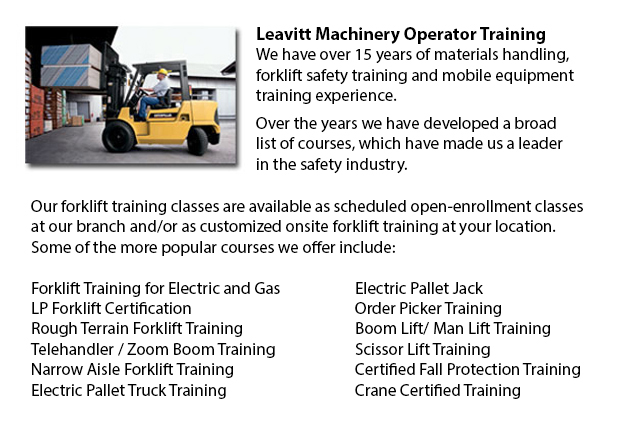
There are in point of fact two classifications of forklifts within the manufacturing business, the rough terrain model and the industrial version. Rough terrain forklifts appeared in the 1940â??s designed primarily for use on rough roads, ideal for lumberyards and construction sites, offering lifting power when there was no paved surface available.
Rough ground forklifts usually employ an internal combustion engine with a battery for power. The engines are able to operate on propane, diesel or gas. Some suppliers are experimenting with rough ground forklifts that utilize vegetable matter and run from ethanol. Large pneumatic tires with deep treads distinguish these lift trucks to permit them to grab onto the roughest soil type without any misstep or drifting.
The most primitive styles of all terrain forklifts were able to transport weights of up to 1000 lbs, with forks that could slide beneath the item, lift it a tiny bit and then transfer it to a different location. After some time on the market, rough terrain vehicles had been given supplementary carrying strength to about 2000 lbs capacity. Telescoping booms were added in the 1960â??s, enabling them to stack materials much higher than in earlier years. The telescoping model feature is a staple of most rough terrain forklifts these days. Present versions are capable of handling well over 4000 lbs thanks to the continuous improvements over time. Telescoping capability has also improved with some designs attaining a height of 35 feet. Operator safety has also become a focus with several all terrain lift trucks now designed are outfitted with an enclosed cab for the driver, as opposed to the older open air seating capacity.
The all terrain forklifts on the market today both function admirably on unpaved surfaces and paved floors. This style of all terrain lift truck is marketed for itsâ?? flexibility enabling the opportunity for companies to utilize one unit to transfer resources from an outside working site into a warehouse.
-
Crown Forklift
More -
Scissor Lifts
The scissor lift or platform lift, is an automated industrial lift that has been customized to be used in retail, wholesale, manufacturing and production settings. Industrial scissor lifts have been used primarily within production and manufacturing... More -
Reach Trucks
Reach Trucks are industrialized equipment utilized for loading and storage in some organizations that maintain storage of supplies to finished merchandise on a pallet which are then placed into lofty shelving units. This loading apparatus helps busin... More -
Aerial Lifts
Aerial lifts can accommodate numerous duties involving high and hard reaching spaces. Often used to carry out routine repair in buildings with elevated ceilings, prune tree branches, raise burdensome shelving units or fix telephone cables. A ladder c... More -
Clark Forklift
Presently, there are over 350,000 Clark lift trucks performing globally, and more than 250,000 operating in North America alone. With five major lines across the globe, Clark is proud to be one of the most expansive companies in the industry. Heavy d... More

Forklift Training Glendale
TOLL FREE: 1-888-254-6157
Glendale, Arizona
forkliftcertificationglendale.com
Email Us
About Us


